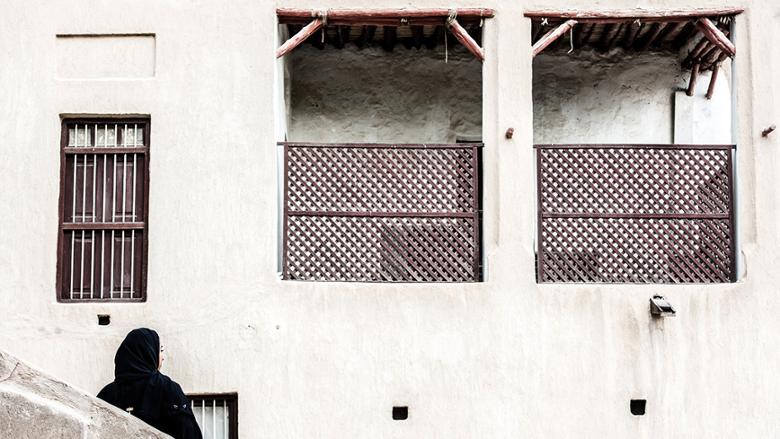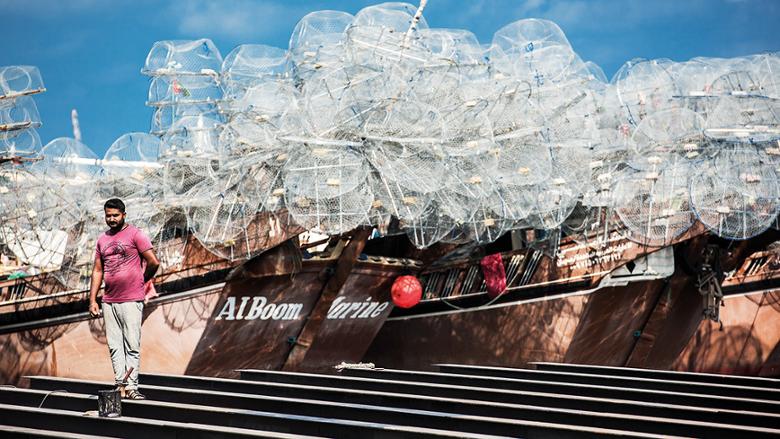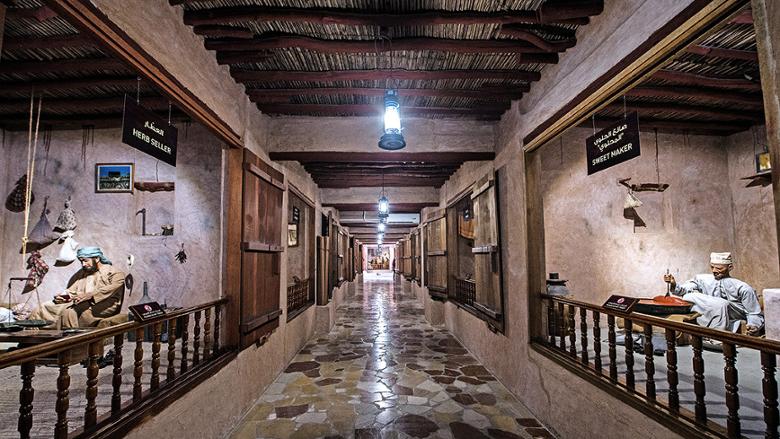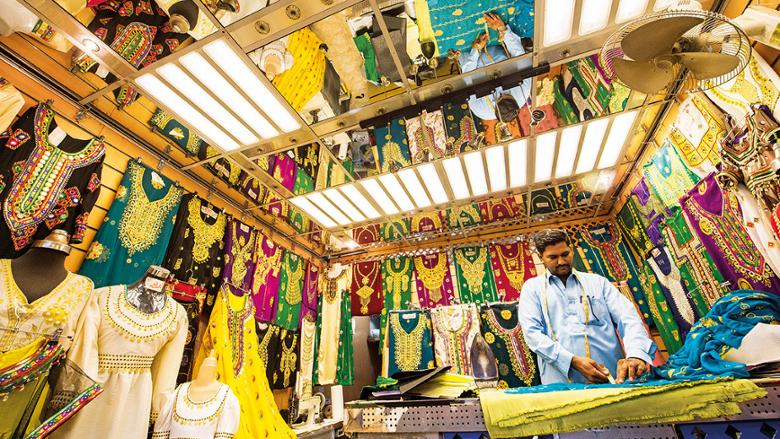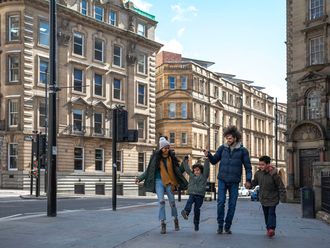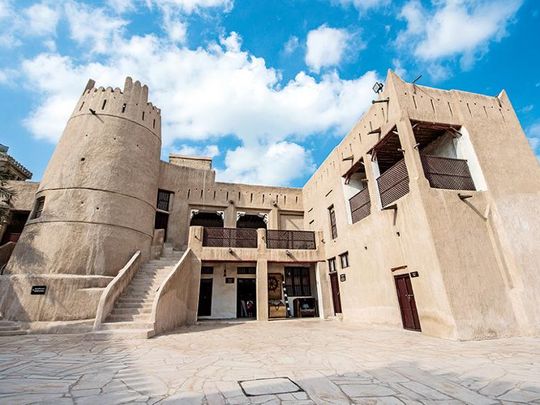
In terms of size — at just over 260 square kilometres — Ajman is the smallest of the seven emirates that make up the United Arab Emirates. But what it lacks in size Ajman makes up in other ways — awakening in you a sense of quiet and a yearning for a laidback pace of life where you can savour life without the mindless rush.
Formerly a pearling and fishing hamlet, the emirate still retains its tranquil, small-town feel. Even on a pleasant Saturday afternoon, the streets wear a deserted look and barely a few vehicles ply the roads. The quiet can be unnerving initially, especially when you have just crossed the traffic-clogged streets of Sharjah, but soon the idyllic charm of the place wins you over.
Fanning out across 16 kilometres of its captivating shoreline, Ajman’s pristine sandy beaches are its main claim to fame as a tourist destination.
Strolling along the gorgeous Corniche and soaking in the spectacular views of the Arabian Gulf is a favourite pastime of the residents here. But to experience the old-world Arabian charm of the emirate, and to delve into its unique heritage, history and culture, it is the Ajman Museum, housed in an 18th-century fortress, that should be your first port of call.
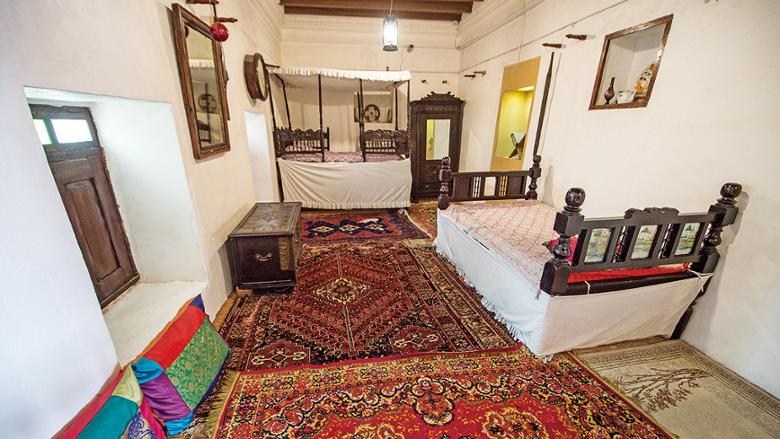
Located on the east side of the central square in the Al Bustan area, this fort, originally constructed around 1775, was rebuilt between 1820 to 1830 following its destruction by British battleships. It served as the Ruler’s residence until 1970. For a decade after that, the fort housed the Ajman police station, before being converted into the present-day museum.
Flanked by a collection of imposing cannons, what greets you as you enter the museum gate bordered by two watch towers are discoveries from an ancient burial site found at Muwaihat, on the outskirts of the city.
‘This was an accidental discovery,’ explains Tariq Amer, our guide at the Museum who is eager to show us a slice of the fascinating history of the UAE and glimpses of Ajman’s past. ‘Municipal workers came up on it in 1986 when they were in the process of laying sewage pipes. It then led to the unearthing of several items of pottery, copper implements, beads and other artefacts, thus tracing the earliest human settlement in the emirate to around 2500 to 2000 BCE.’
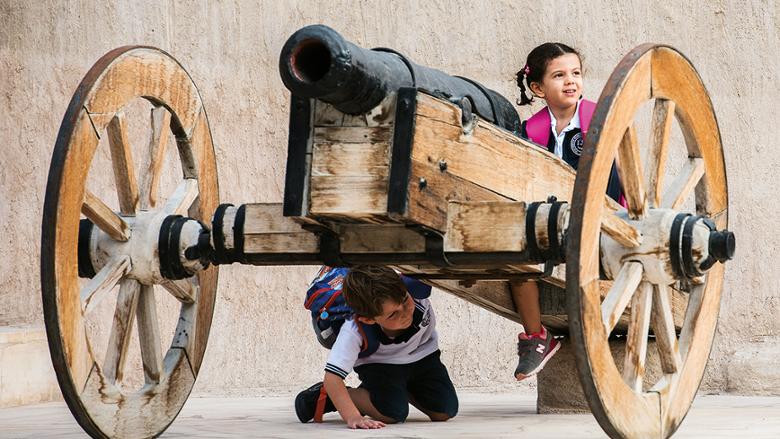
The circular tomb built with piles of stones indicates that it was the burial chamber of a family, he explains, and was built in the style of the Umm Al-Nar period – the bronze age culture that prevailed at the time.
We walk across the pathway to enter the modest majlis where, explains Tariq, the former Ruler, the late Shaikh Rashid Bin Humaid Al Nuaimi, who ruled Ajman from 1928 to 1981, entertained his guests. Weapons including guns and swords and ammunition belts are on display here, attesting to the fort’s symbol as a defense stronghold in the earlier times.
Standing at the inner courtyard, the magnificence of the 200-year-old fort is on full display. A perfect example of traditional Emirati architecture, this two-storied structure with long, shaded verandas is made of fossilised coral unearthed from the sea and stones from neighbouring Oman, all bonded with a mixture of sand, mud, seashells and gypsum — materials with low heat conductivity. Its thick walls and small windows also insulate it from extreme heat and cold.
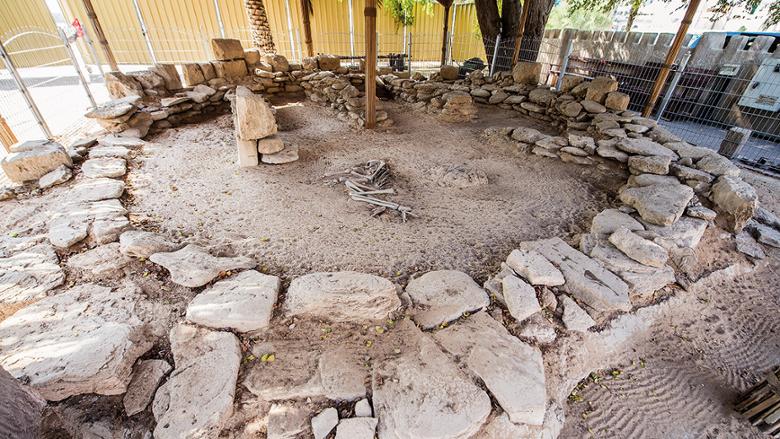
Tariq points out to the barjeel or wind tower which, he adds, is the oldest functional wind tower in the UAE. A unique ventilation system of the time, it allows hot air to rise to the top and directs cool air to the rooms beneath, and ‘during extreme summers, sails of dhows dipped in water were hung inside this wind tower to maximise the cooling impact’.
Relics, traditions, beliefs
Artefacts excavated from the Muwaihat archaeological site are housed inside the ‘Room of Archaeology’, formerly the servants’ quarters of the royal household. ‘In the earlier days, a wall demarcated the living quarters of the royal family and that of the palace employees,’ says our guide. ‘Today, the walls have been broken down and the area expanded to include an auditorium and several additional rooms to display exhibits.’
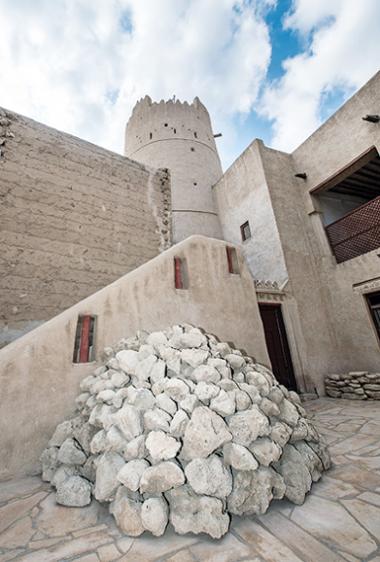
The archaeological relics found at Muwaihat form the centerpiece of the collections at the Ajman Museum. It tells the story of a distant past; of funeral traditions and beliefs as evidenced from the large clay jars and funeral necklaces encrusted with gems such as agate from China and carnelian sourced from India with which it enjoyed maritime trade links. Crude implements such as bronze tools and a seal made of soapstone from the period are also on display here.
Of note are the chevron-lined pottery collection bearing all the hallmarks of links to Mesopotamia. ‘What is interesting is that the influences of these distinctive clay pottery with black wavy lines on an orange-red background from three millennia ago can still be found in the pottery pieces produced in Ajman today,’ says Tariq.
The exhibits at the Ajman Museum encapsulates the essence of local life in the pre-oil era. From centuries-old manuscripts including a handwritten copy of the Quran dating to 590 AH, to dioramas representing the traditional market place to costumes, communication tools, and weapons in use at the time — all provide a fascinating window into a way of life vastly different from the one we experience today.
Trading influences
Fishing, pearling and dhow building were the primary occupations of that period. Pearl boxes, weights, sieves and scales; and palm frond fishing cages are some of the highlights here. The nomadic life of the Bedouins as well as the indigenous irrigation system, al falaj, that served the needs of agriculture, and the desert traditions such as falcon training, are also well represented.
‘As Ajman and the UAE was on the trade route between the Middle East and the Far East, it served as a place where goods from various places were brought in for trade and redistribution to other destinations in the region,’ says Tariq. ‘The result has been influences in everyday life from regions as far as Mesopotamia, India, Africa and across Arabia. Trunks of trees from East Africa were used for the ceiling of the fortress while gold came in from India as did several spices that are now an integral element of Emirati cuisine. Silver jewellery was sourced from parts of Africa.’
We weave in and out of rooms, ducking our heads to avoid the low-level wooden doors – built in this style to conserve on a natural resource that was expensive as it had to be imported from India. Keeping the heights of the doors low also gave women enough privacy and time to cover their heads when a male member entered the room, explained Tariq.
We get a glimpse of Shaikh Rashid’s room on the upper floor that has on display some of his personal items of use such as swords in sheaths, firearms, gifts from visiting dignitaries and official documents.
All things traditional
In the Traditional Games room, Tariq points out to pastimes such as Al Tabah (desert hockey) and Al Doob (model raft racing) that once kept children enthralled before the gadget era took over. The Market Hall, on the other hand, gives an insight into the traditional occupations such as ropemaking and mat weaving, pearl trading and dhow building, and elegantly portrays the way of life in the past.
We also learn how the traditional judicial system worked and the punishment meted out to criminals of the time — their feet shackled into the groove of a wooden log and held in place by a thick iron bar, preventing any form of movement. Those convicted of major crimes were fettered thus and left under the sun in the open desert where only family members could visit to feed them.
Tariq leads us on to the Dates Room, where we see how sacks of ripe dates let out their luscious nectar through the gunny bags that then flowed through ridged grooves on the floor and into a pot to make the delicious Dhibs. The Traditional Medicines hall gives an insight into the practices of cauterisation, wet cupping, Arabian splinting and Quran remedies, and also contains a magnificent collection of herbal medicines.
As much as it is a window to the past, the Ajman Museum is also a reminder of the UAE’s ancient links with various civilisations and how this mutual influence and enrichment has shaped its policy of tolerance and respect for other cultures over the millennia.
Other attractions
• When in Ajman, hop over to Souq Al Saleh (Embroidery Souq), directly opposite Ajman Museum, and shop for traditional tailoring materials for women and children in this recently refurbished atmospheric Arabian market. Sunlight filters in through its palm-frond roof supported by timber beams, creating intricate patterns on the coral stone floor. It is the oldest textile market in the GCC, and houses around 200 shops and features everything from gold and silver-embroidered Moroccan kaftans and jalabiyas to crystal encrusted hijabs and shaylas.
• At Saleh Abdullah Embroidery, we watch as Naved from Pakistan carefully and slowly runs a warm iron over a gold-sequinned yoke he has just embroidered to smooth out the wrinkles. Dress materials in every hue are on display here while mannequins showcase a variety of patterns ranging from simplistic designs to the more ornate and elaborate gowns that celebrate the Arabian aesthetic. ‘It takes two to three days to complete one dress,’ says Naved, who has been in the embroidery trade for 13 years now. ‘Our clients are mainly UAE nationals and those from the neighbouring GCC countries. While earlier, printed material was the preferred choice, ladies today prefer plain materials in silk, crepe and satin that are embellished with heavy gold and silver embroidery.’
• At the far end of the souq is Al Eatimad Tailoring that specialises in accessories for the garments. Metallic yarns in various hues of gold and silver and hand-knotted Moroccan buttons in an array of sizes and colours are also available, says Naimatullah from Afghanistan, who manages the store. Satin and chiffon from Indonesia and China too are available. Souq Al Saleh is open from 9am to 1pm and 5pm to 11pm.
• A short distance away, near the Creek is the bustling Fish Market where you can watch fishing boats unload fresh catch on to rows of auction tables. A lively auction takes place every day at 6am, 5pm and 6pm. There are around 200 fish stalls in the market where you can haggle on prices and get your fish filleted. Take it to the adjoining restaurants where it will be coated with spices and grilled/cooked to your taste. The Ajman Fish Market is open from 5am to 10pm.
All the details
• Ajman Museum is open on all days from 8am to 8pm. Friday: 2pm to 8pm
• Entry fee: Dh5 per person
• Remember to request for the Museum guide — their interesting insights and titbits bring the history alive.


